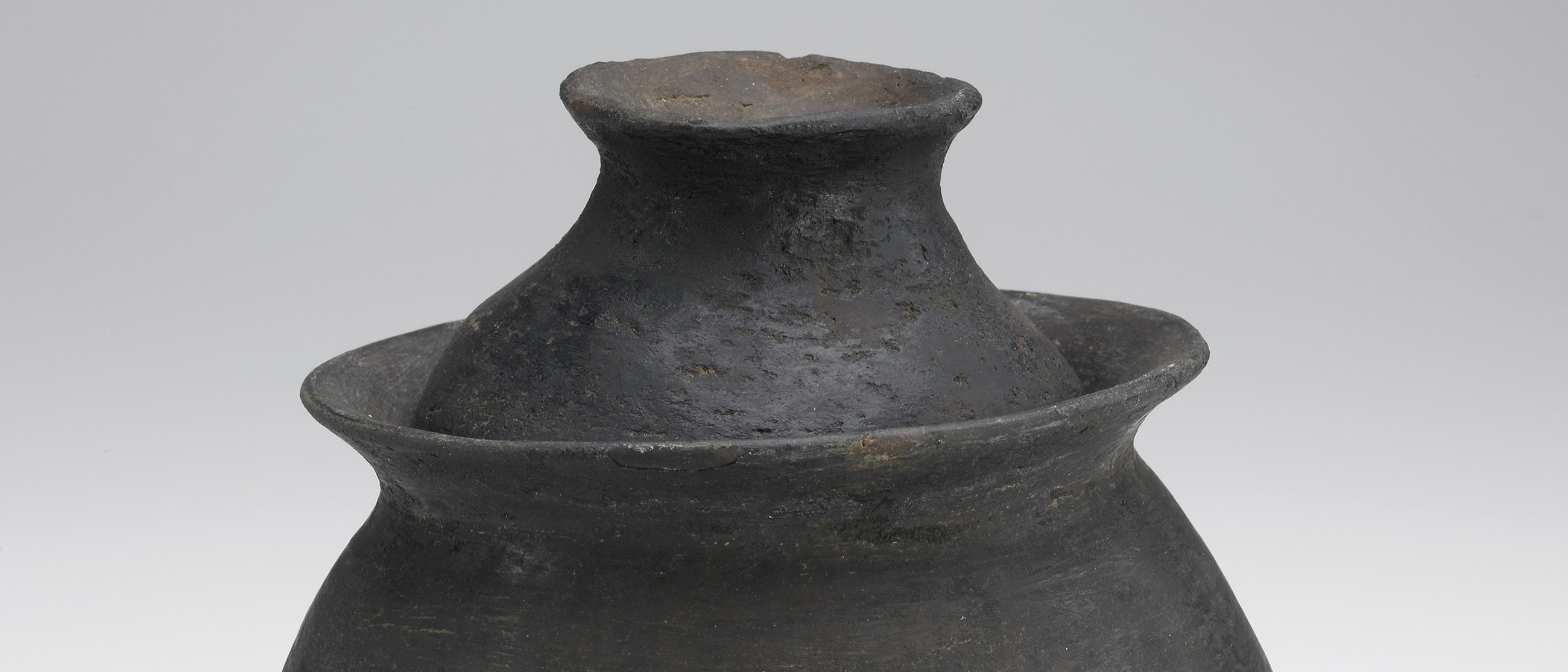RESIN
View all related objects in the collections
Resin is applied to just-fired pots to produce a blackened surface, either partial or overall, on earthenware vessels. The process is used by ethnic Cham potters in the village of Palay Gok (Tri Duc), in Phan Thiet province, Central Vietnam, who ladle or pour the resin around the rims of the pots to produce long, irregular drips. As used by potters among the Ba Na and other groups making earthenware in the Central Highlands, an overall coating of the resin produces a uniform black surface.
As observed at a Ba Na potter's home in Kon Tum province in March 2006, during the final phase of shaping a pot, the surface is gently polished with a smooth river pebble. The source of the resin is the t'nung tree (a species of pine). The bark is removed and discarded from pieces of the wood collected from the forest, and the bast is pounded to soften it before soaking it in a jar of water. Soaking releases pigment into the water, which can then be used repeatedly for coating fired jars so long as sufficient pigment remains.
Another piece of t'nung is used to brush the tinted water (dak t'nung) both inside and outside the pot as soon as it is removed from the bonfire, while it is still hot. (If the pot is not hot, the solution will not penetrate.) According to the potter, this resin coating makes the pot durable (k'jap). Before a new pot can be used for cooking, a mixture of water and manioc leaves is boiled in it to remove the excess resin.

